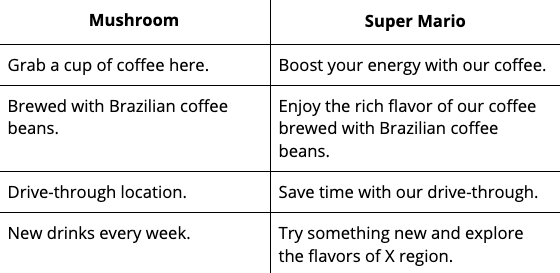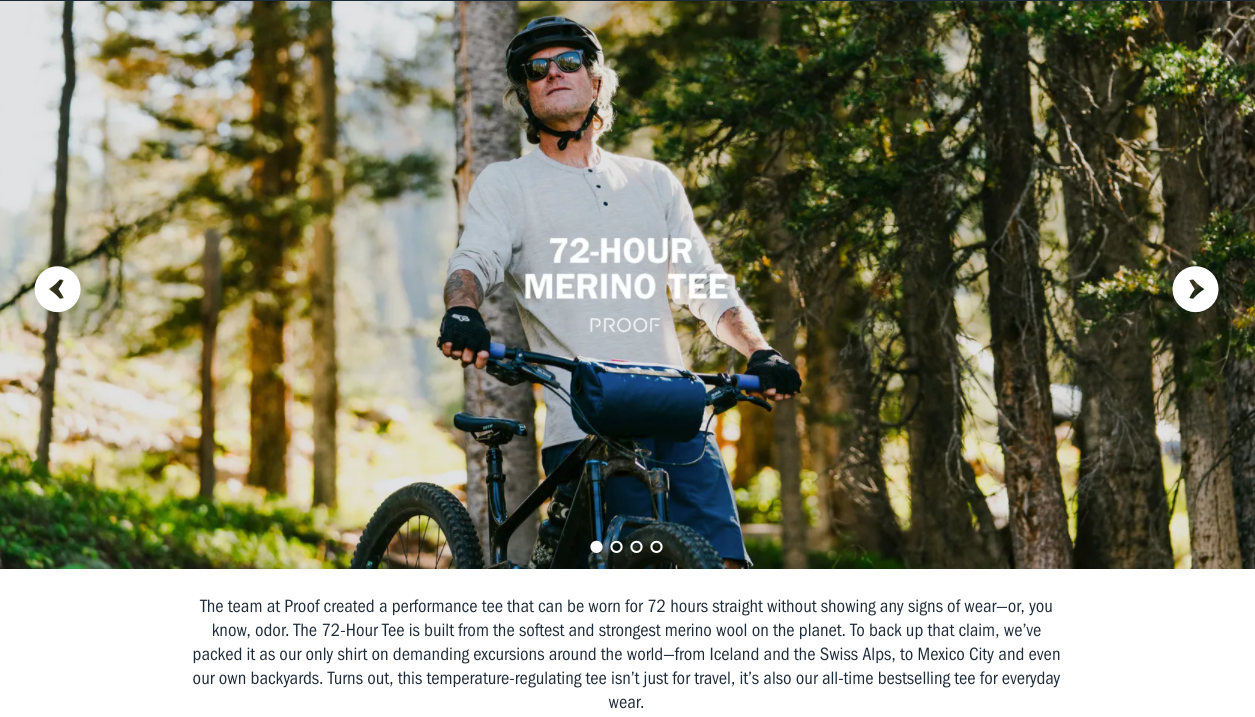The team at men's eCommerce retailer Huckberry has this stealth way of capturing and holding your attention, all while humbly keeping their heads down and just forging ahead with their work. Being that I was their publicist and responsible for promoting them, this humble nature wasn't doing me any favors. Trying to get them covered in business publications, I wanted to know some of the secrets to their success that we could share with a larger audience.
One day, finally, I coaxed something more out of them. I wasn't prepared for how much their lesson would change my perspective—then and still today. It's called the Super Mario equation.
The Super Mario equation
It starts, as good stories do, with a hero: Super Mario.
In Super Mario video games, when Mario encounters and runs into a mushroom, he powers up into Super Mario, increasing his speed and invincibility.
The marketing concept Huckberry shared with me turns this concept into an equation. Huckberry didn't invent the equation—they found it online but don't quite remember where. I found UserOnboard speaks briefly to it, so that might be the original source. In any case, I'm going to explain this a little differently and more in-depth.
The Huckberry team has a little graphic of the equation tacked to a wall in the office.
Mario + mushroom = Super Mario
In the equation, Mario is the customer. The mushroom is your product. Super Mario is your customer with the product.
Now, here's Huckberry's revelatory key. In your business, you're not selling the mushroom; you're selling Super Mario. Let me say that again, from another perspective: you're not selling your product or service; you're selling how your customer will be impacted by your product or service.
So often, companies get stuck selling the product, telling customers about the product itself, without making that connection to how the customer will receive the product. "We do this, our product is this." This is often where that feeling of being salesy comes from. You're not connecting with your customer. Instead, you're pushing your product without considering the customer's interpretation or need. Product education is important, of course, but when it comes to marketing and selling, remember to lead with messages that speak to Super Mario—the customer with the product.
Say your business is a coffee shop. You sell cups of coffee to people. These base messages show the contrast between a "mushroom" message as opposed to a "Super Mario" message.

In their article, UserOnboard refers to mushroom versus Super Mario as the features of the product versus the benefits of the product. When you're selling the mushroom, your messaging is focused on the product features. When you're selling Super Mario, your messaging is focused on the product benefits. From a marketing perspective, we can take this a little further. When you're selling Super Mario, there's opportunity to tell a story—not about yourself or the product necessarily, but by connecting the impact of these benefits on the consumer. The approach of weaving a narrative is often more emotional, which, when authentic, will build consumer investment and trust.
As I mentioned before, the Huckberry team is genius with marketing, and their ability to tell a story is beyond. I'll share two examples of their marketing messages that beautifully illustrate the Super Mario strategy.
The Proof 72-Hour Tee
A few years ago, Huckberry started selling a merino T-shirt from Proof. Merino wool naturally wicks moisture, resists odors, and regulates temperature. It's a great T-shirt for adventuring. But Huckberry didn't leave it at that.
Instead, they created an entire story around what it would be like to adventure in this T-shirt. They started with the naming convention, using the name to underscore the shirt's ability to resist odors for 72 hours. You could wear this shirt through an entire weekend. But not just any weekend—a weekend adventure.

To launch the shirt, Huckberry shared the story of their team going on a 72-hour trip to Mexico City, wearing the shirt for all three days and testing the benefits advertised. With every release of the collection, Huckberry released a new 72-hour adventure, traveling to Iceland, Cape Cod, and everywhere in between, offering customers ideas on where and how to travel, but also beautifully, simply, engagingly illustrating the real benefits of the shirt.
Instead of just understanding that the T-shirt naturally wicks moisture, resists odors, and regulates temperature (mushroom), the customer now thinks some version of "I want to adventure like that—and I'll be better equipped with that shirt" (Super Mario).
The Japanese chef's knife
As Huckberry started offering more home goods, they debuted a new Japanese chef's knife, which carried a higher price point. When they promoted the launch via email, rather than simply listing the attributes of the knife, they linked to a live demonstration of a chef using the knife and walking through how to sharpen the knife.
The demonstration showed the customer the power of the knife: how much easier cooking would be with the right tools, and how caring for the equipment would make the investment worthwhile. It also helped the customer overcome any emotional obstacles of not knowing how to use a new tool. Instead of telling people how great the knife was, they showed them what they might be able to do with it.
How you can use the Super Mario equation
This concept changed how I put out marketing messages as well as how I receive them from other companies. Instead of defaulting to describing the product, I now default to making the connection on how the product will improve the customer's life.
Identify your Super Mario
You know your product or service cold, but when was the last time you considered the impact on the customer? Most entrepreneurs start businesses when they identify a product or service that solves a problem. When you're thinking through your Super Mario, this is a great place to start. What problem does your business solve? What does your customer care about? If you're stumped or feel disconnected from the customer, it's often helpful to read customer feedback to identify a pattern to the impact you offer.
Decide how you want to sell your Super Mario
Once you've identified the benefits of your product or service, consider how you want to deliver this information. Rather than just regurgitating the impact, why not use storytelling or develop a creative concept that helps land your messaging? Make sure you're telling a Super Mario story.
In a screenwriting class I recently took, the instructor suggested that, to push through to a more creative and unique scene, write ten versions of what could happen. Try this trick to push past cliched or obvious stories and arrive at that distinct idea that communicates your Super Mario and connects most with your customer.
Apply your Super Mario
With Super Mario in mind, you'll want to review all of your messaging, everywhere. It should touch every message you put out, from your homepage to product descriptions, from social media to emails—the list goes on. It can be a little daunting, so if you don't have time for a full, unprompted audit, start with your next campaign.
In April 2020, our client Grit Coffee asked us to help them with their pandemic pivot to eCommerce. Could we come up with a way to encourage people to buy coffee while their shops were closed? Helpfully, the Grit team had noticed that some customers were sending coffee to friends, family, and non-profits as gifts in that stressful time. How could we encourage people to do more of that?
Grit Coffee thoughtfully brews coffee beans sourced from around the world. But at that time, the coffee represented more than that. We all needed caffeine to stay alert and counteract sleepless nights. We needed to maintain a sense of normalcy in uncertain times, and what's more routine than coffee? Echoing the generosity of spirit of those gifting coffee to others, we came up with the "Coffee is my love language" campaign, which spoke to that feeling of warmth and love that can be found in the act of sharing a cup of coffee.

The Super Mario revelation continues to unpack for me over time. It's a great litmus test for our messaging and campaigns. Are we reaching customers most powerfully with our current message? If not, it's time to bring in Super Mario.





